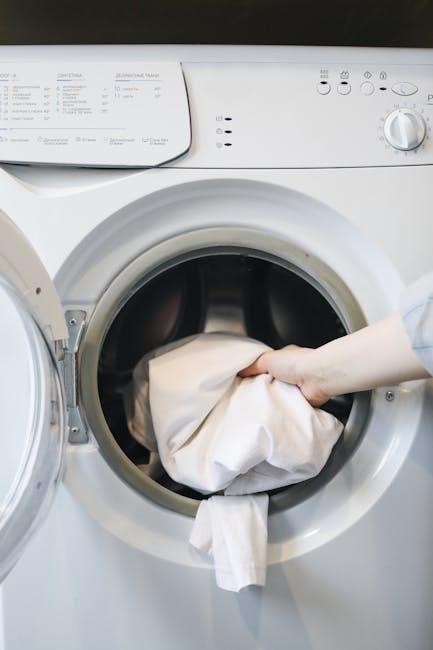
bio bidet manual
Bio Bidet Manual: A Comprehensive Guide
Welcome! This comprehensive guide is designed to help you navigate the world of Bio Bidet ownership. Whether you’re a first-time user or looking to deepen your knowledge, this manual provides essential information.
Understanding Your Bio Bidet
Before diving into the features and functions, let’s establish a foundational understanding of your Bio Bidet. This section aims to familiarize you with the core components and operational principles that make your bidet a modern bathroom essential. Your Bio Bidet is more than just a toilet seat; it’s a sophisticated appliance designed for personal hygiene and comfort.
Understanding how the seat sensor works, the purpose of the various nozzles, and the importance of water pressure will contribute to a more enjoyable and effective experience. We’ll also touch upon the electrical requirements and safety precautions to ensure safe usage. Getting acquainted with these basic elements is crucial for optimal performance and longevity of your bidet. This knowledge will empower you to troubleshoot minor issues and perform routine maintenance with confidence, ensuring your Bio Bidet remains a valuable asset in your daily routine.

Bio Bidet Features and Functions
Explore the array of features your Bio Bidet offers. From basic cleansing to advanced settings like oscillation and massage, understand how to maximize your bidet’s potential for optimal hygiene and comfort.
Basic Functions: Cleansing and Bidet Modes
The core of any Bio Bidet is its cleansing and bidet functions. The cleansing mode, typically activated by a rear wash button, provides a thorough and hygienic posterior wash. Water pressure and temperature can often be adjusted to your preference, ensuring a comfortable experience.
The bidet mode, designed for feminine hygiene, offers a gentle and effective frontal wash. Like the cleansing mode, adjustability is key, allowing users to personalize the water stream’s intensity and warmth. These basic functions promote cleanliness and well-being. Bio Bidet’s come with these two wash modes, providing users with the tools they need for a refreshing and sanitary bathroom experience.
Understanding these basic functions is crucial for enjoying the full benefits of your Bio Bidet and is often activated by a simple press of a button.
Advanced Features: Oscillation, Massage, and Auto Functions
Beyond basic cleansing, Bio Bidets boast advanced features. Oscillation gently moves the nozzle back and forth, increasing the cleaning area for a more comprehensive wash. Massage mode pulsates the water stream, offering a soothing and therapeutic experience. These functions enhance comfort and promote relaxation.
Auto functions streamline the process. Some models have an “auto” button that initiates a pre-programmed cleaning cycle. This cycle may combine cleansing, oscillation, and massage for optimal hygiene. Bio Bidet’s may include auto functions that are tailored to feminine washing. Auto functions provide convenience and ensure consistent cleaning.
These advanced features elevate the bidet experience, providing a luxurious and personalized cleansing routine. Understanding and utilizing these features will maximize the benefits of your Bio Bidet, improving overall hygiene and well-being. The combination of these functions are designed to provide the best experience.

Installation Guide
Installing your Bio Bidet can be a straightforward process. This section provides detailed instructions for DIY installation, including connecting to the water supply with the provided T-valve for a secure setup.
DIY Installation: Step-by-Step Instructions
Ready to install your Bio Bidet? Follow these simple steps for a successful DIY installation. First, ensure the water supply is shut off before beginning. Next, detach your existing toilet seat. Position the Bio Bidet mounting bracket onto the toilet bowl, aligning it with the mounting holes. Secure the bracket using the provided bolts.
Now, slide the bidet seat onto the mounted bracket until it clicks into place. Connect the bidet hose to the bidet seat and the T-valve. Attach the T-valve to the toilet tank and the existing water supply line. Ensure the rubber gasket is properly seated inside the T-valve to prevent leaks.
Carefully open the water supply valve and check for any leaks around the connections. Plug the bidet into a grounded GFCI outlet. Finally, test the bidet functions to ensure everything is working correctly. If you encounter any issues, refer to the troubleshooting section.
Connecting to Water Supply: T-Valve Installation
Connecting your Bio Bidet to the water supply involves a crucial step: T-valve installation. Begin by shutting off the water supply to your toilet. Flush the toilet to empty the tank completely. Locate the water supply line connecting to the bottom of your toilet tank.
Carefully disconnect this water supply line from the toilet tank. Attach the T-valve to the toilet tank’s fill valve, ensuring the rubber gasket is properly seated inside to prevent leaks. Connect your existing toilet hose to the bottom of the T-valve and the water shut-off valve.
Finally, connect the provided bidet hose to the remaining open end of the T-valve and the bidet seat itself. Slowly turn the water supply back on, checking for leaks at all connection points. Tighten any connections as needed to stop leaks. Your Bio Bidet is now properly connected to the water supply.

Troubleshooting Common Issues
Encountering issues with your Bio Bidet? This section addresses common problems like power failures, nozzle malfunctions, water pressure issues, and seat sensor troubles. Find solutions to keep your bidet functioning optimally.
Power Issues and Solutions
If your Bio Bidet isn’t powering on, begin by checking the GFCI outlet. Reset it if tripped. Ensure the bidet is securely plugged in. A loose connection can often be the culprit. If the outlet isn’t working, test it with another device. If still no power, check your circuit breaker.
Confirm the seat sensor is activated. The bidet won’t function unless it detects someone is seated. If problems persist, a factory reset might resolve the issue. Consult your manual for instructions. Contact Bio Bidet support for sensor replacement guidance if needed. Remember to always consult your user manual for model-specific instructions. Ignoring safety precautions can lead to damage or injury. If you have any concerns, consult a qualified technician.
Always disconnect the bidet from the power supply before performing any maintenance or repairs.
Nozzle Malfunctions and Cleaning
If your Bio Bidet nozzle isn’t functioning correctly, start by inspecting it for obstructions. Mineral deposits or debris can hinder its operation. Use a pH-neutral dish soap and warm water solution with a soft toothbrush reserved for cleaning to gently clear any blockages. Ensure the nozzle is fully extracted during cleaning for thorough access.
If the nozzle is stuck, avoid forcing it. Consult your manual for self-cleaning mode instructions, which can often resolve minor issues. Reinstalling the seat, ensuring the nozzle isn’t obstructed by the rim, may also help. If problems persist, contact Bio Bidet support for further assistance or possible component replacement. Remember that proper maintenance is crucial to extend the lifespan of your bidet. Regular cleaning prevents buildup and ensures optimal performance.
Water Pressure Problems
Experiencing low water pressure with your Bio Bidet can be frustrating, but it’s often a simple fix. First, check that the water supply valve is fully open. A partially closed valve restricts water flow. Inspect the bidet hose for kinks or obstructions that might impede pressure.
The strainer, located at the water inlet, can accumulate debris over time. Clean the strainer regularly to ensure optimal water flow. Mineral buildup can also affect pressure; consider descaling your bidet periodically according to the manufacturer’s instructions. If the issue persists, verify that the water pressure to your toilet is adequate. Low household water pressure will naturally affect bidet performance. Contact Bio Bidet support if these steps don’t resolve the problem.
Seat Sensor Problems
A malfunctioning seat sensor can prevent your Bio Bidet from operating correctly. The bidet is designed to only function when it detects someone is seated. First, ensure nothing is obstructing the sensor. Clean the seat thoroughly, paying attention to the sensor area, as residue can interfere with its function.
If cleaning doesn’t resolve the issue, try resetting the bidet. Unplug it for a few minutes, then plug it back in. This can sometimes recalibrate the sensor. If problems persist, it could indicate a faulty sensor. In this case, contacting Bio Bidet support is recommended. They can offer further troubleshooting steps or arrange for a replacement if necessary. Remember to have your model number and purchase date ready when you contact support.
Control Knob Issues
If you’re experiencing problems with your Bio Bidet control knob, there are a few potential causes and solutions to consider. The control knob is responsible for operating the bidet’s internal valve, which regulates water flow. A damaged or cracked knob may not properly engage the valve, resulting in a malfunction.
Check the knob for any visible damage. If you notice cracks or breaks, contact Bio Bidet’s support team for assistance. They can provide information on replacement parts or other troubleshooting steps. If the knob appears intact, ensure it’s securely attached to the bidet. Sometimes, the knob can become loose, preventing it from properly operating the valve. If the knob is loose, try tightening it. If the problem continues, consult the Bio Bidet support team for further guidance.

Maintenance and Care
Proper maintenance is key to extending the life of your Bio Bidet. Regular cleaning, draining the tank, and replacing the strainer are essential. Follow the guidelines for optimal performance.
Cleaning Procedures
Maintaining a clean Bio Bidet ensures hygiene and prolongs its lifespan. Regularly wipe down the seat and exterior with a soft, damp cloth. For stubborn stains, use a pH-neutral dish soap solution, avoiding harsh chemicals that could damage the unit. The nozzle requires special attention; gently clean it with a soft brush or cloth.
Some models have a self-cleaning function, which should be used regularly. Ensure the bidet is disconnected from the power source before any extensive cleaning. Pay close attention to crevices and hard-to-reach areas where dirt and bacteria can accumulate.
Regular cleaning prevents odors and maintains optimal performance. Always refer to your specific Bio Bidet model’s manual for detailed cleaning instructions and recommended cleaning agents. A clean bidet is a happy bidet!
Draining the Warm Water Tank
To maintain optimal hygiene and prevent sediment buildup, periodically draining the warm water tank of your Bio Bidet is recommended. Begin by disconnecting the bidet from its power source to ensure safety. Next, locate the drain plug, usually found on the unit’s underside or back.
Place a container beneath the plug to catch the water. Carefully remove the plug, allowing the tank to empty completely. Once drained, inspect the tank for any sediment or debris, and rinse if necessary.
Replace the drain plug securely. Before reconnecting to power, refill the tank by running the bidet’s water functions. Consult your specific Bio Bidet model’s manual for detailed instructions and safety precautions. Regular draining ensures clean, warm water and extends the lifespan of your bidet.
Replacing the Strainer
Maintaining clean water flow to your Bio Bidet requires a functioning strainer. Over time, the strainer can become clogged with sediment and debris, impacting performance. To replace it, first, turn off the water supply to the bidet. Locate the strainer, typically found where the water supply hose connects to the unit.
Carefully unscrew the hose connection. Remove the old strainer, noting its orientation for proper reinstallation. Clean the surrounding area before inserting the new strainer, ensuring it’s correctly positioned. Reattach the water supply hose, tightening it securely but not excessively.
Turn the water supply back on slowly, checking for leaks. If leaks occur, tighten the connection further. Regularly replacing the strainer ensures optimal water pressure and protects your bidet’s internal components from damage, extending its lifespan and maintaining hygiene. Consult your manual for specifics.
Warranty Information
Bio Bidet Innovation LLC provides a warranty for its products, ensuring they are free from manufacturing defects. The warranty period varies depending on the model, so refer to your specific product documentation for details. This warranty covers repair or replacement of defective parts, subject to the terms outlined in the warranty agreement.
Note that the warranty typically does not cover damages resulting from improper installation, misuse, or unauthorized repairs. Using carbon or iodine water filters is prohibited and will void the warranty. Inbound shipping costs for warranty service are usually the responsibility of the customer.
For warranty claims, contact Bio Bidet’s customer support with proof of purchase and a detailed description of the issue. They may offer at-home repair instructions for certain products. This written warranty is the only warranty made by BBC Innovation LLC.